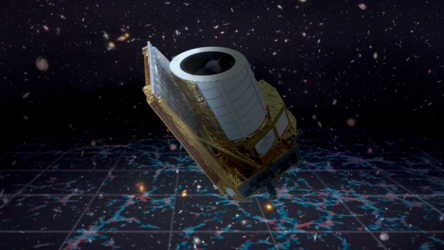Accept all cookies Accept only essential cookies See our Cookie Notice

About ESA
The European Space Agency (ESA) is Europe’s gateway to space. Its mission is to shape the development of Europe’s space capability and ensure that investment in space continues to deliver benefits to the citizens of Europe and the world.
Highlights
ESA - United space in Europe
This is ESA ESA facts Member States & Cooperating States Funding Director General Top management For Member State Delegations European vision European Space Policy ESA & EU Responsibility & Sustainability Annual Report Calendar of meetings Corporate newsEstablishments & sites
ESA Headquarters ESA ESTEC ESA ESOC ESA ESRIN ESA EAC ESA ESAC Europe's Spaceport ESA ESEC ESA ECSAT Brussels Office Washington OfficeWorking with ESA
Business with ESA ESA Commercialisation Gateway Law at ESA Careers Cyber resilience at ESA IT at ESA Newsroom Partnerships Merchandising Licence Education Open Space Innovation Platform Integrity and Reporting Administrative Tribunal Health and SafetyMore about ESA
History ESA Historical Archives Exhibitions Publications Art & Culture ESA Merchandise Kids Diversity ESA Brand Centre ESA ChampionsLatest
Space in Member States
Find out more about space activities in our 23 Member States, and understand how ESA works together with their national agencies, institutions and organisations.
Science & Exploration
Exploring our Solar System and unlocking the secrets of the Universe
Go to topicAstronauts
Missions
Juice Euclid Webb Solar Orbiter BepiColombo Gaia ExoMars Cheops Exoplanet missions More missionsActivities
International Space Station Orion service module Gateway Concordia Caves & Pangaea BenefitsLatest
Space Safety
Protecting life and infrastructure on Earth and in orbit
Go to topicAsteroids
Asteroids and Planetary Defence Asteroid danger explained Flyeye telescope: asteroid detection Hera mission: asteroid deflection Near-Earth Object Coordination CentreSpace junk
About space debris Space debris by the numbers Space Environment Report In space refuelling, refurbishing and removingSafety from space
Clean Space ecodesign Zero Debris Technologies Space for Earth Supporting Sustainable DevelopmentLatest
Applications
Using space to benefit citizens and meet future challenges on Earth
Go to topicObserving the Earth
Observing the Earth Future EO Copernicus Meteorology Space for our climate Satellite missionsCommercialisation
ESA Commercialisation Gateway Open Space Innovation Platform Business Incubation ESA Space SolutionsLatest
Enabling & Support
Making space accessible and developing the technologies for the future
Go to topicBuilding missions
Space Engineering and Technology Test centre Laboratories Concurrent Design Facility Preparing for the future Shaping the Future Discovery and Preparation Advanced Concepts TeamSpace transportation
Space Transportation Ariane Vega Space Rider Future space transportation Boost! Europe's Spaceport Launches from Europe's Spaceport from 2012Latest

LISA Pathfinder Results
Thank you for liking
You have already liked this page, you can only like it once!
This graph shows the residual relative acceleration of the two test masses on ESA's LISA Pathfinder as a function of frequency.
LISA Pathfinder is a technology demonstrator mission that placed two test masses – a pair of identical, 2 kg, 46 mm gold–platinum cubes – in the most precise freefall ever achieved, in order to test techniques to observe gravitational waves from space.
The results shown in this graph are based on just two months of science operations with LISA Pathfinder.
In the top central part of the graph, the wedge-shaped area indicates the original requirements of LISA Pathfinder. Below it, the more stringent requirements for a future spaceborne observatory of gravitational waves are also indicated.
The grey, red and blue curves are based on the measurements performed with LISA Pathfinder, which achieved a precision more than five times better than originally required.
The grey curve on the left shows the effect of a small centrifugal force acting on the cubes at the lowest frequencies probed by the experiment, below 1 mHz. This is caused by a combination of the shape of LISA Pathfinder's orbit and the effect of the noise in the signal of the startrackers that are used to orient the spacecraft.
The red curve shows LISA Pathfinder's performance after the contribution of the centrifugal force has been subtracted; the source of the residual noise at low frequencies is still being investigated.
At intermediate frequencies, between 1 and 60 mHz (at the centre), control over the test masses is limited by gas molecules bouncing off the cubes: a small number of them remain in the surrounding vacuum. This effect was seen to be reducing as more molecules were vented into space, and is expected to improve in the following months.
At higher frequencies, between 60 mHz and 1 Hz (on the right), LISA Pathfinder's precision is limited only by the sensing noise of the optical metrology system used to monitor the position and orientation of the test masses. The cause of the spike around 70 mHz is still under investigation.
An additional effect, visible as a bump in the red curve between 0.02 Hz and 0.2 Hz, is caused by a tiny misalignment of the test masses in the two axes perpendicular to the direction of the laser. The blue curve, visible below the red one in this part of the graph, shows the mission's performance after this contribution has been subtracted.
These results show that LISA Pathfinder has surpassed its original requirements, reaching a level of precision close to or comparable with to that required by a future gravitational-wave observatory.
-
CREDIT
ESA/LISA Pathfinder Collaboration -
LICENCE
ESA Standard Licence

LISA Pathfinder performance

LISA Pathfinder performance analysis

LISA Pathfinder final performance analysis

LISA Pathfinder performance















 Germany
Germany
 Austria
Austria
 Belgium
Belgium
 Denmark
Denmark
 Spain
Spain
 Estonia
Estonia
 Finland
Finland
 France
France
 Greece
Greece
 Hungary
Hungary
 Ireland
Ireland
 Italy
Italy
 Luxembourg
Luxembourg
 Norway
Norway
 The Netherlands
The Netherlands
 Poland
Poland
 Portugal
Portugal
 Czechia
Czechia
 Romania
Romania
 United Kingdom
United Kingdom
 Slovenia
Slovenia
 Sweden
Sweden
 Switzerland
Switzerland
























